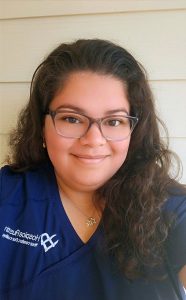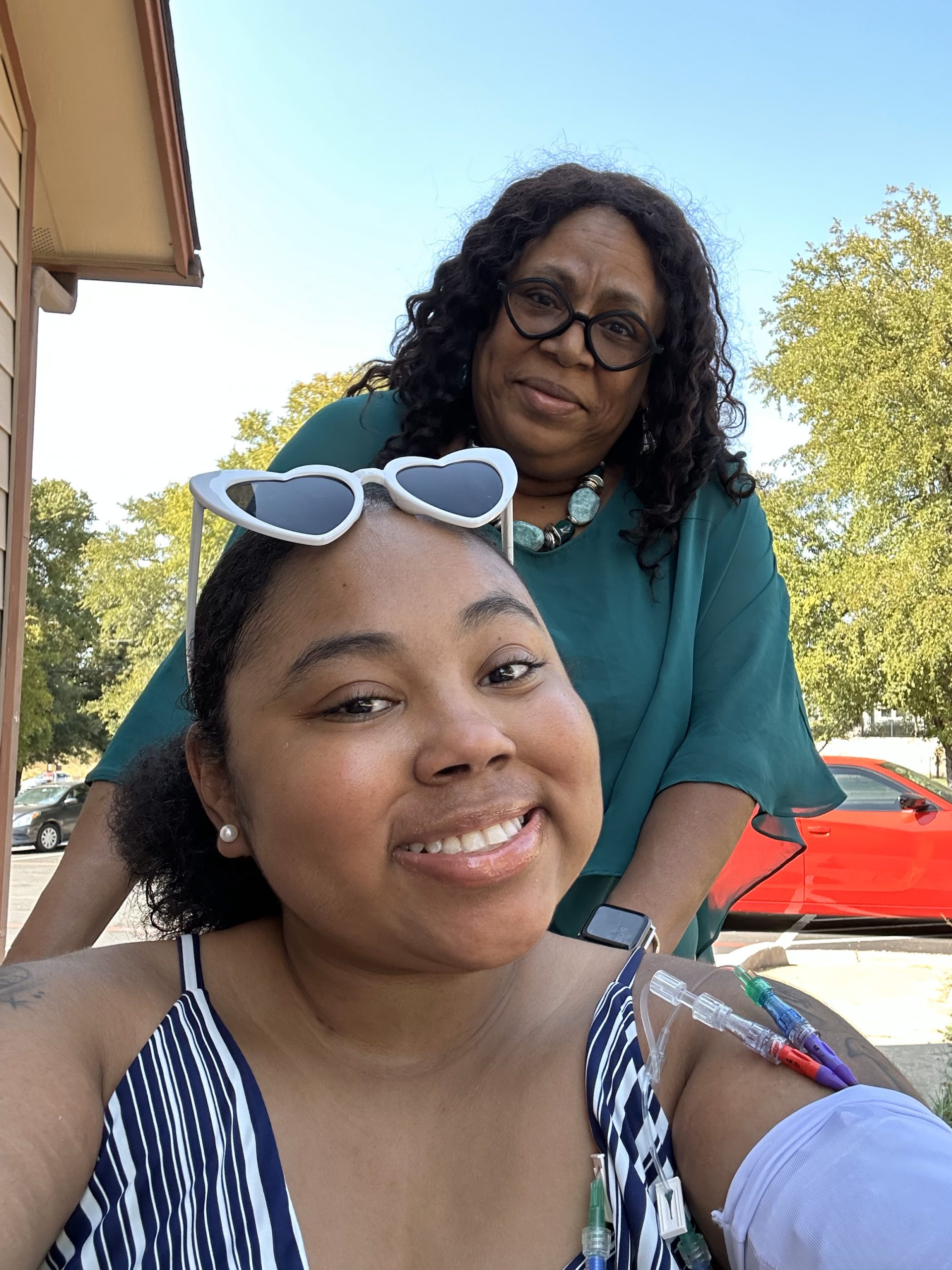When it comes to her medical care, Jazmin Campbell, 21, has a long history of not being believed. She was given a variety of diagnoses as different symptoms cropped up, but no one could get a handle on what was wrong. Because her symptoms fluctuate, she encountered skepticism over the years from clinicians. It didn’t help that she was young, female, and a person of color.
“I look normal, but I wasn’t normal,” Jazmin said. “They thought I was faking and could do more than I could. Sometimes I could walk and sometimes I couldn’t – it’s done that all my life.”
Jazmin was eventually diagnosed with Stiff Person’s Syndrome, a rare autoimmune neurological disorder. She was on Hospice Austin’s service for seven months before her condition stabilized. She’s now a patient of Hospice Austin’s affiliate, Austin Palliative Care.
“They gave this baby heck her entire life that she’s faking,” her mother, Renee Smith, explained. “She struggles with telling people that she’s hurting, because of the way she’s been treated. There’s a lot of medical trauma.”
Medical trauma can be a barrier to patients accessing the end-of-life care they need. Other barriers include a lack of understanding about their illness and end of life care on the part of the patient, and a lack of understanding about cultural differences on the part of the medical community. According to a study published in the Journal of the American Medical Association, more than half of White Medicare patients who died in 2020 received hospice care, compared with only a third of Hispanic, African-American, and other racial and ethnic groups.

Erica Ochoa, RN
“In my culture, you never give up,” said Hospice Austin Admission Nurse Erica Ochoa. “A lot of families see hospice as giving up. It’s important for us to be mindful about what their customs are and to be respectful and informed about their cultural differences.”
Language barriers, of course, can be a problem, particularly when teens or other family members are translating and find the news too difficult to process or share. That’s why Keisha Jones, director of Hospice Austin’s Christopher House, always uses a professional translator.
Keisha said that when there’s a language or cultural barrier, the medical community tends to dance around the conversation and use euphemisms because the conversations are complex. They say things like, “Things are changing, your mom looks different and now we’re faced with a challenge.” The patient and family sometimes don’t know that the patient is dying until we meet with them for the first time.
Whenever a patient enters Hospice Austin’s Christopher House, Keisha tells the family that she’s sorry their loved one is dying. Then she asks the family what culturally makes their loved one happy – what reminds them of peace. Keisha played German songs for a German patient once. Though the patient could no longer speak, she sang every word. Keisha also has her staff create touch boards in different languages so patients can point to the things they want, or to the area of the body that is experiencing discomfort.
One time a woman from the Middle East who was in town visiting her daughter had a health crisis and came onto our service. The daughter was in the healthcare field, and medically fluent. However, in their culture, pain was considered to just be part of the dying process and patients were expected to bear it as best they could. When the daughter was visiting during the day, the patient would moan in pain but not take medicine. At night, when her daughter wasn’t there, she would ask for and receive medicine. One night, with the patient’s permission, the staff made a video of the patient showing how comfortable she was. The patient said something in her language in the video. When they showed the daughter the next day, she said her mother was saying, “I don’t want to die in pain.” Both the mother and daughter had thought they were culturally doing what the other one wanted. Her mother was able to die peacefully.
Keisha said that when she walks into a room containing a family of color and tells them who she is and what she can do for them, it builds an immediate trust in seeing someone who looks like them. Keisha said more cultural teaching is needed for all healthcare workers.
“We don’t teach nurses and administrators how to have difficult conversations in the face of barriers,” Keisha said. So often in the healthcare system, it’s about numbers and not about patients. “And then the patient can get labeled as problematic,” she said. “I’m not afraid to talk to people and I’m patient enough to understand where they are and to connect with them.”
For the past two years, Hospice Austin’s GIFT Project has been focused on educating underserved populations – both minority and rural – about advance directives, advance care planning, and hospice and palliative care. We’ve partnered with agencies such as Meals on Wheels, Foundation Communities, People’s Community Clinic and congregations of color to present informational sessions so that people may make informed decisions about what they many want before a healthcare crisis occurs.
Renee Smith, Jazmin’s mother, agrees that education is key. Now she’s helping to educate others about hospice and palliative care. A woman called her recently who had just put her mother on hospice care and she was unsure if she made the right decision. Renee was able to reassure her.
“People sometimes say with hospice that if you go in, you never come out. But Jazmin has been to Chrisotpher House seven times,” Renee said. “The biggest barrier to care is a lack of understanding what hospice is and what it does. If you’ve never been educated, you can’t make an informed decision.”

Melinda Marble
Communications Coordinator





